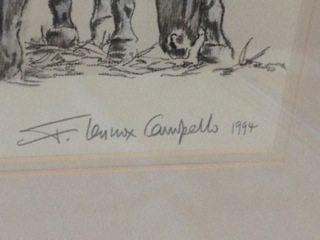Artomatic 2016 comes to Montgomery County, Maryland, for the first time in its nearly seventeen year history, for its signature free arts event to be held from November 3 - December 9.
Yep! The planet's largest free and open group art show... the show that artists and the public loves - and art critics hate - is back!
Artomatic 2016 comes to Park Potomac, a Montgomery County neighborhood.
Park Potomac is located where Montrose Road crosses I-270; Artomatic will be held at 12435 Park Potomac Avenue. With 45,000 square feet of display space on the 5th and 6th floors featuring 380 artists, Artomatic will include a special opening weekend celebration beginning on Thursday, November 3.
"By artists and for everyone," Artomatic is well-known for temporarily transforming empty spaces into vibrant arts events that celebrate creativity and create a unique and exciting opportunity for tens of thousands of visitors. This is the show that we all love, and art critics hate (mostly because they usually don't have the mental batteries to write about an art show that can include 1,000 non-juried artists!).
Anyone and everyone can present their art at Artomatic, and presentation spaces are always selected on a first-come, first serve basis -- so it’s a great way to discover new art and artists. This is what makes this show unique on the planet - it is a great charging of artistic batteries for artists, and a great place for beginner and experienced collectors to pick among the 100s of artists to find that gem!
Perfect timing if you wanna see artwork that will range form the sublime to the mundane! Artomatic is about to open up again... It's a little smaller than usual, but still around 350 artists!! Details at http://www.artomatic.org/
I'll repeat: It's easily the best place to find the wildest range of art on the planet! See a review of one from 2012 here: http://dcartnews.blogspot.com/2012/06/artomatic-2012-review.html
This one from 2009: http://dcartnews.blogspot.com/2009/07/final-artomatic-top-10-artists-of-2009.html and here: http://dcartnews.blogspot.com/2009/06/my-artomatic-picks-now-that-i-have.html
2011: http://dcartnews.blogspot.com/2011/10/artomatic-frederick-i-finally-made-it.html
2004: http://dcartnews.blogspot.com/2004/12/artomatic-2004-review-slightly.html
Wann know why art critics hate Artomatic, but everyone else loves it: http://dcartnews.blogspot.com/2009/06/criticism-journalism-ethics-and-aom-ive.html and also: http://dcartnews.blogspot.com/2009/05/artomatic-opens-tomorrow-if-you-are.html
At a time of regional transformation, people are looking for art and gathering destinations right where they live, and Artomatic brings this "New Suburbanism" place-making to Montgomery County. People want a sense of interaction; Artomatic has shown that it can catalyze a sense of greater community within a community that transforms people and places. This is why Maryland National Capital Park and Planning Commission and the Arts & Humanities County of Montgomery County are Artomatic’s enthusiastic sponsors.Every day and night of the event, people visit Artomatic to discover new art, engage other likeminded visitors, bring friends, grab a drink, listen to music, and mingle with the creative community and get to know the surrounding community of Park Potomac. Says Lisa Wood of Foulger Pratt, "We’re always looking for ways to introduce Park Potomac’s uniqueness and engage with our wonderful community.
This is an amazing opportunity and we are excited to host this innovative organization." Artomatic’s online calendar lists performances times and special events, including Saturday workshops for parents and kids. No matter what kind of creative events you or your friends and family like, you’ll find something to enjoy at Artomatic.
Visitors will enjoy easy access to Artomatic from the Montrose West Exit off I-270. The Park Potomac community, with its colorful floral mural is a landmark. Enter the complex by the lane marked for Park Potomac Avenue, circle the round-a-bout, and follow the signs to Artomatic at 12435 Park Potomac Avenue. Plentiful two hour free garage and surface parking is on site.
Or come by Metro via Red Line and transfer to RideOn buses 42 or 47. Check WMATA Trip Planner for further information, and see the Artomatic website about Foulger-Pratt weekday shuttle service from White Flint Metro Station direct to Artomatic.
For the latest information about Artomatic 2016, how to participate in the future, when to visit, the activities and events calendar, subscribe to Artomatic by email or Facebook and visit www.artomatic.org.
What: Artomatic 2016, an arts spectacular at Park Potomac in Montgomery County.
When: Thursday, November 3 – Friday, December 9, 2016:
Thursdays: Noon – 10 pm
Fridays: Noon – Midnight
Saturdays: Noon - Midnight
Sunday: Noon – 6 pm
Closed on Thanksgiving Day
Where: 12435 Park Potomac Avenue, Potomac, Maryland, Floors 5 and 6.
Who: For everyone and for free. Persons under 18 must be accompanied by an adult.
Performance: For information about how to perform at Artomatic, visit:
http://www.artomatic.org/participate/artists/performing
Website: www.artomatic.org
Social Media: Facebook: Facebook.com/Artomatic Twitter: @ARTOMATIC











